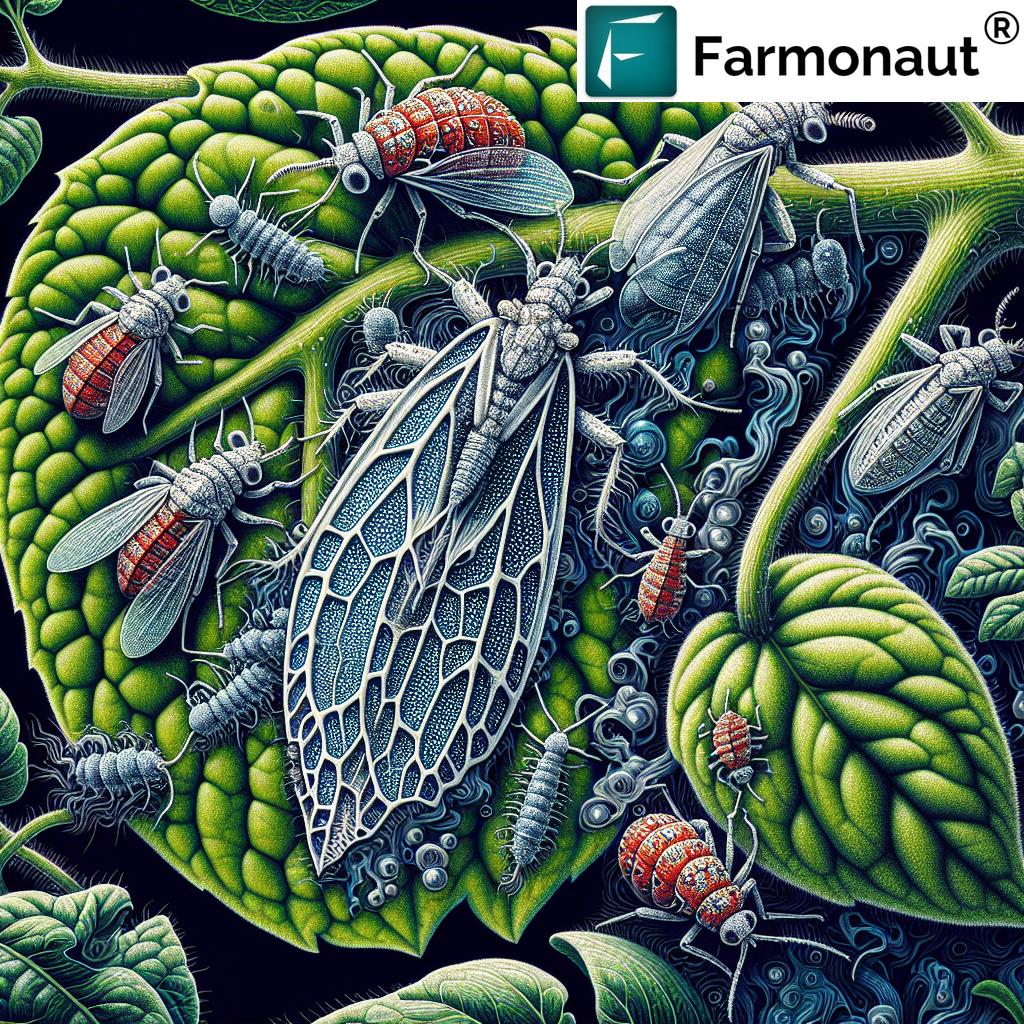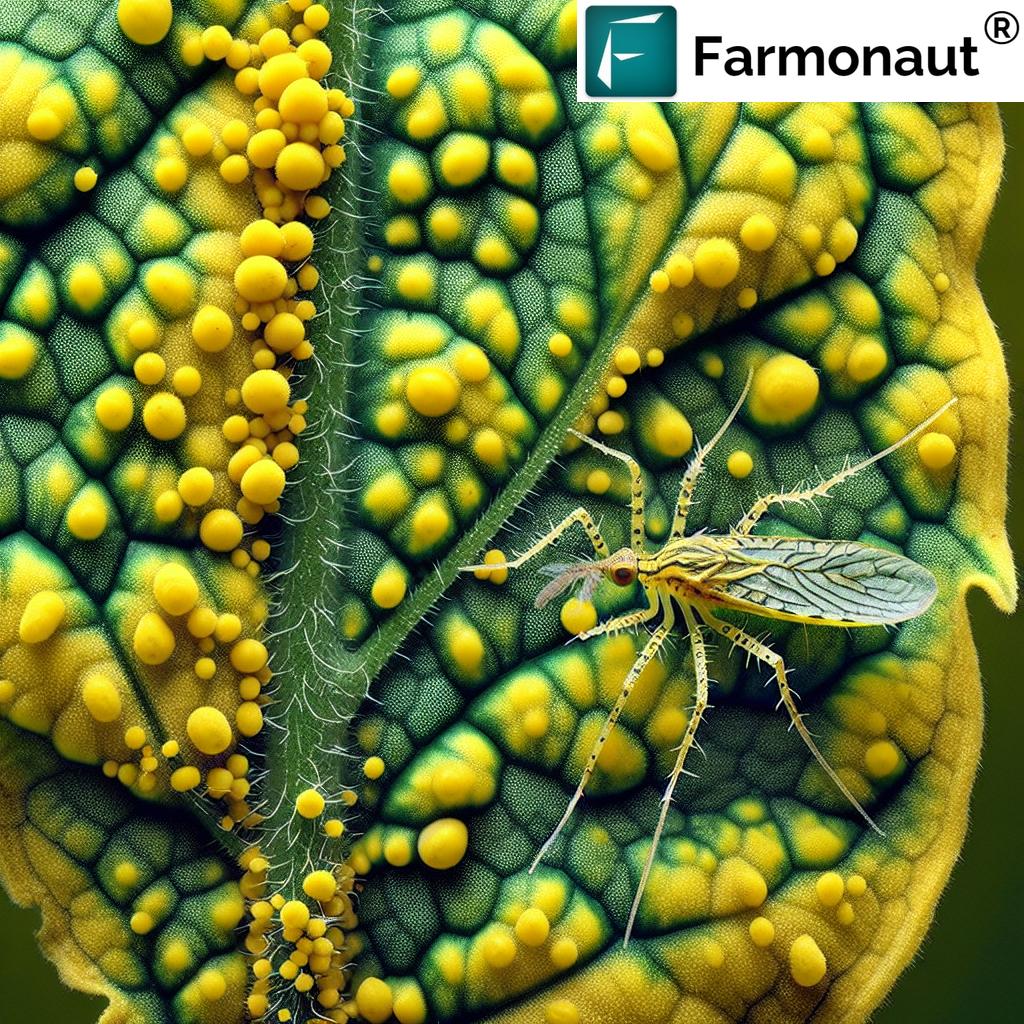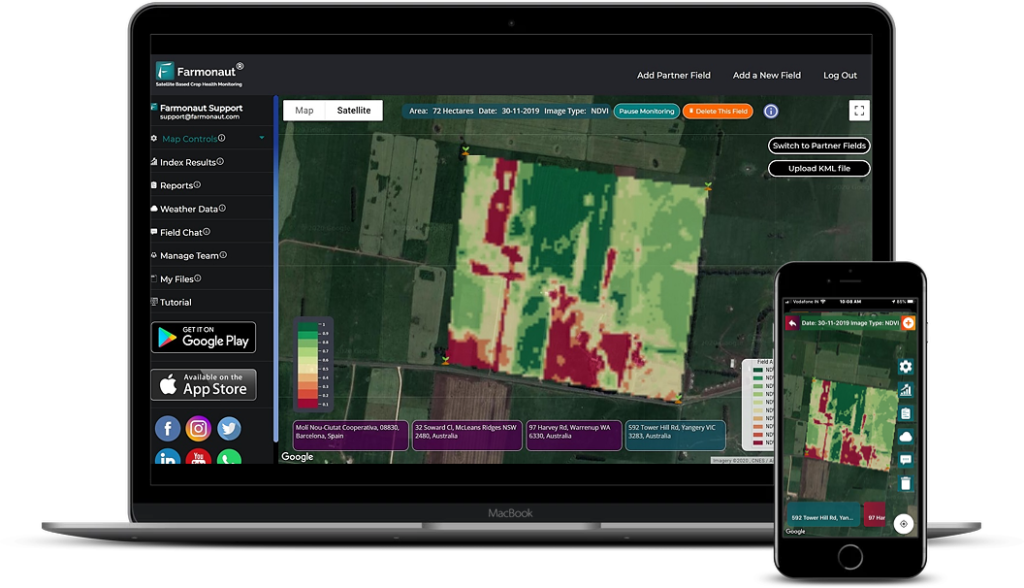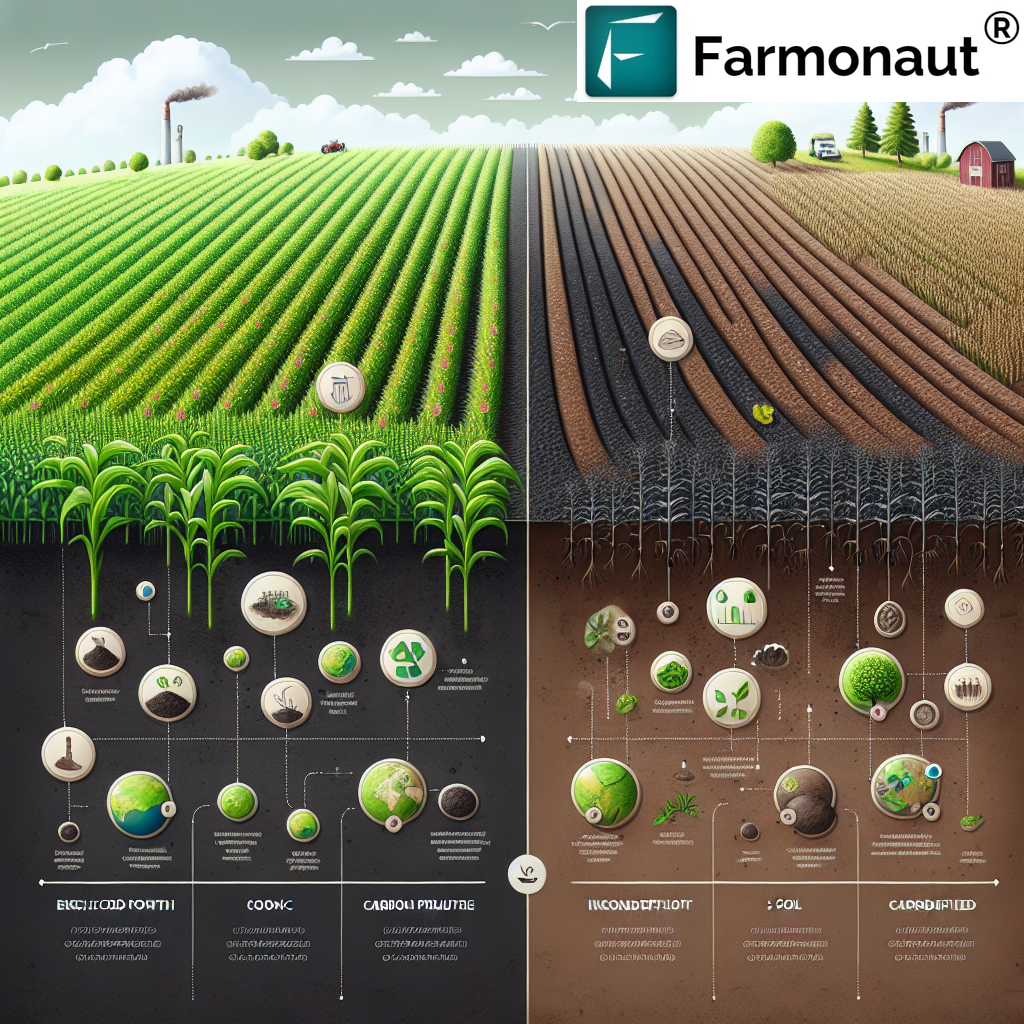Maximizing Yields: Expert Guide to Paddy Wheat and Sampanna Paddy Seeds for Successful Wheat and Paddy Cultivation

In the ever-evolving world of agriculture, staying ahead of the curve is crucial for farmers aiming to maximize their yields and ensure sustainable crop production. At Farmonaut, we understand the importance of leveraging cutting-edge technology and expert knowledge to achieve these goals. In this comprehensive guide, we’ll delve deep into the intricacies of cultivating paddy wheat and the benefits of using sampanna paddy seeds for successful wheat and paddy cultivation.
Table of Contents
- Introduction to Paddy Wheat Cultivation
- Understanding Sampanna Paddy Seeds
- Best Practices for Wheat and Paddy Cultivation
- Leveraging Technology in Crop Management
- Farmonaut’s Role in Precision Agriculture
- Soil Preparation and Nutrient Management
- Water Management Techniques
- Pest and Disease Control
- Harvesting and Post-Harvest Practices
- Sustainable Farming Approaches
- Market Trends and Economic Considerations
- FAQs
1. Introduction to Paddy Wheat Cultivation
Paddy wheat, a term often used interchangeably with rice wheat, refers to a cropping system where wheat is grown in rotation with paddy (rice). This system is prevalent in many parts of Asia, particularly in regions with suitable climate conditions for both crops. The paddy wheat system offers several advantages:
- Efficient land use
- Improved soil health through crop rotation
- Diversified income for farmers
- Enhanced food security
However, successful cultivation of paddy wheat requires careful planning, appropriate seed selection, and advanced agricultural practices. This is where the importance of sampanna paddy seeds and modern farming technologies comes into play.
2. Understanding Sampanna Paddy Seeds
Sampanna paddy seeds represent a significant advancement in rice cultivation. These high-yielding varieties are developed through careful breeding programs aimed at enhancing desirable traits such as:
- Higher yield potential
- Improved resistance to pests and diseases
- Better adaptability to various climatic conditions
- Enhanced nutritional value
When incorporated into a paddy wheat rotation system, sampanna paddy seeds can significantly boost overall farm productivity. The benefits extend beyond the rice crop, as the improved soil health and reduced pest pressure can positively impact the subsequent wheat crop as well.
3. Best Practices for Wheat and Paddy Cultivation
Successful cultivation of wheat and paddy requires a holistic approach that considers various factors. Here are some best practices we recommend:
For Paddy Cultivation:
- Proper land preparation, including puddling for optimal water retention
- Timely transplanting of seedlings
- Efficient water management through controlled irrigation
- Balanced fertilizer application based on soil tests
- Integrated pest management to control diseases and insects
For Wheat Cultivation:
- Timely sowing to capitalize on residual moisture after paddy harvest
- Appropriate seed rate and spacing for optimal plant population
- Judicious use of fertilizers, especially nitrogen
- Weed management through cultural and chemical methods
- Irrigation scheduling based on critical growth stages
By implementing these practices, farmers can significantly improve their yields in both paddy and wheat crops, ensuring a successful paddy wheat rotation system.
4. Leveraging Technology in Crop Management
In today’s digital age, technology plays a crucial role in enhancing agricultural productivity. At Farmonaut, we’re at the forefront of this technological revolution, offering cutting-edge solutions for precision agriculture. Our satellite-based crop monitoring system provides farmers with valuable insights into their fields, enabling data-driven decision-making.
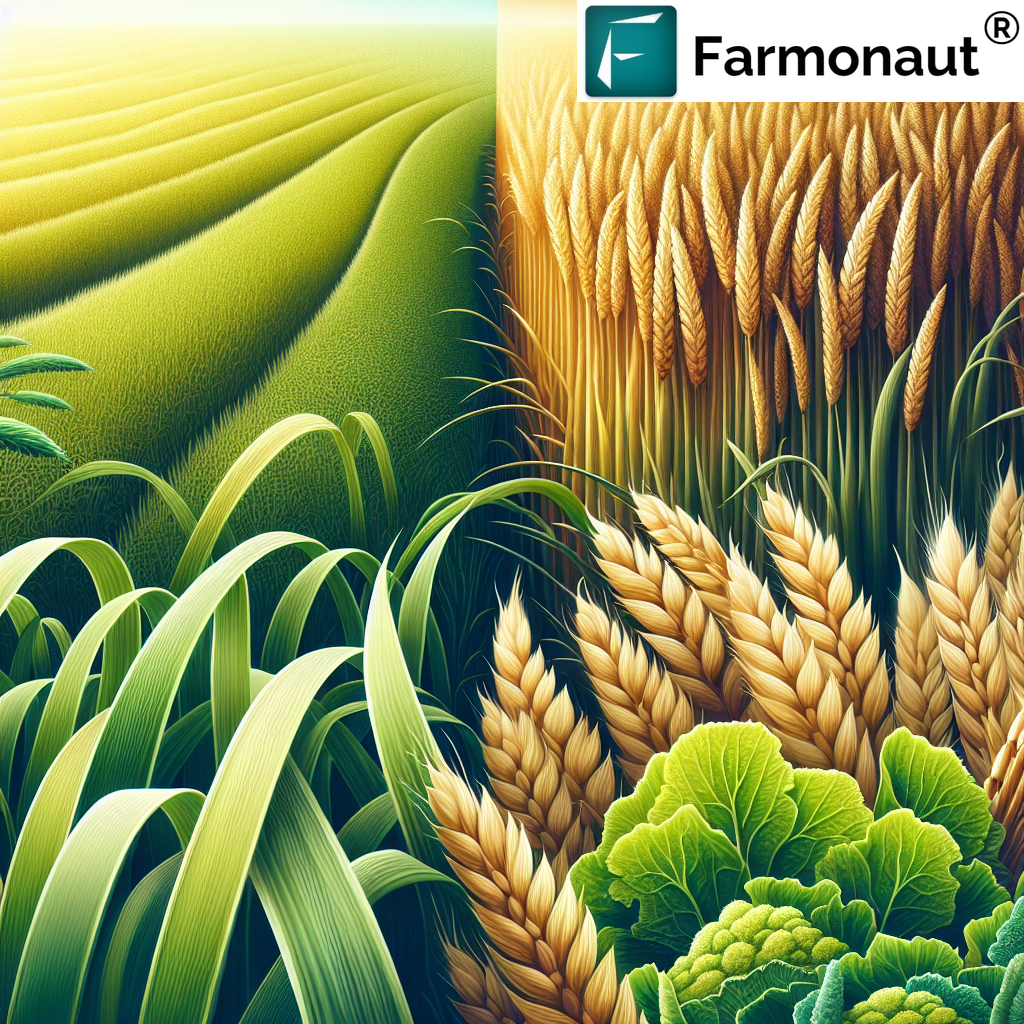
Here’s how our technology can benefit paddy wheat farmers:
- Real-time crop health monitoring through NDVI (Normalized Difference Vegetation Index) analysis
- Early detection of pest infestations and disease outbreaks
- Precise irrigation scheduling based on soil moisture data
- Yield prediction and harvest planning
- Historical field performance analysis for improved crop rotation strategies
By integrating these technological tools into their farming practices, paddy wheat farmers can optimize resource use, reduce costs, and maximize yields.
5. Farmonaut’s Role in Precision Agriculture
At Farmonaut, we’re committed to making precision agriculture accessible to farmers of all scales. Our platform offers a range of services tailored to the needs of paddy wheat cultivators:
- Satellite-Based Crop Health Monitoring: Our advanced satellite imagery analysis provides farmers with regular updates on crop health, enabling timely interventions.
- AI-Powered Advisory System: Our Jeevn AI system offers personalized recommendations based on crop type, growth stage, and local conditions.
- Weather Forecasting: Access to accurate, field-specific weather forecasts helps farmers plan their activities more effectively.
- Resource Management Tools: Our platform includes features for managing farm inputs, machinery, and labor, optimizing overall farm operations.
To experience the benefits of our technology firsthand, visit Farmonaut App or download our mobile app from Google Play Store or Apple App Store.
| Feature | Farmonaut Satellite System | Drone-based Monitoring | IoT-based Monitoring |
|---|---|---|---|
| Coverage Area | Large scale (100s to 1000s of hectares) | Limited (10s of hectares per flight) | Limited (Depends on sensor placement) |
| Frequency of Data Collection | Regular (Every 3-5 days) | On-demand (Requires manual flights) | Continuous (Real-time data) |
| Initial Setup Cost | Low (No hardware required) | High (Drone purchase and training) | Medium to High (Sensor network setup) |
| Operational Complexity | Low (Automated data processing) | High (Requires skilled operators) | Medium (Maintenance of sensor network) |
| Data Analysis | Advanced AI-powered insights | Mostly manual interpretation | Automated but limited to sensor locations |
6. Soil Preparation and Nutrient Management
Proper soil preparation and nutrient management are crucial for successful paddy wheat cultivation. Here’s a detailed look at these aspects:
Soil Preparation:
- Tillage: For paddy, puddling is essential to create a soft, muddy layer that retains water. For wheat, conventional tillage or conservation tillage methods can be used depending on soil conditions.
- Leveling: Ensure proper field leveling for uniform water distribution in paddy and even germination in wheat.
- Residue Management: Incorporate crop residues to improve soil organic matter content and nutrient availability.
Nutrient Management:
- Soil Testing: Regular soil tests are crucial to determine nutrient deficiencies and pH levels.
- Balanced Fertilization: Apply a balanced NPK (Nitrogen, Phosphorus, Potassium) fertilizer based on soil test results and crop requirements.
- Micronutrients: Address micronutrient deficiencies, particularly zinc in paddy and iron in wheat, through foliar sprays or soil applications.
- Organic Matter: Incorporate organic matter through green manuring or farmyard manure application to improve soil structure and fertility.
By focusing on these aspects, farmers can create an optimal growing environment for both paddy and wheat crops, laying the foundation for high yields.
7. Water Management Techniques
Efficient water management is critical in paddy wheat systems, especially given the contrasting water requirements of the two crops. Here are some advanced techniques we recommend:
For Paddy:
- Alternate Wetting and Drying (AWD): This technique involves alternating between flooded and non-flooded conditions, reducing water use without compromising yield.
- Saturated Soil Culture (SSC): Maintaining the soil in a saturated state rather than flooded conditions can save water while supporting healthy plant growth.
- Laser Land Leveling: This technology ensures uniform water distribution, reducing water waste and improving crop establishment.
For Wheat:
- Deficit Irrigation: Strategic application of less water during certain growth stages can improve water use efficiency without significant yield loss.
- Sprinkler or Drip Irrigation: These methods offer more precise water application compared to flood irrigation, especially useful in water-scarce regions.
- Mulching: Application of organic or plastic mulch can reduce evaporation losses and conserve soil moisture.
Our satellite-based monitoring system at Farmonaut can provide valuable insights into soil moisture levels, helping farmers make informed decisions about irrigation timing and quantity. This data-driven approach ensures optimal water use efficiency across the paddy wheat system.
8. Pest and Disease Control
Effective pest and disease management is crucial for maintaining healthy crops and ensuring high yields in paddy wheat cultivation. Here’s a comprehensive approach to tackling this challenge:
Integrated Pest Management (IPM):
- Cultural Controls: Implement crop rotation, adjust planting dates, and use resistant varieties to disrupt pest life cycles.
- Biological Controls: Encourage natural predators and use biopesticides to control pest populations.
- Chemical Controls: Use pesticides judiciously and only when necessary, following all safety guidelines and regulations.
- Monitoring: Regularly scout fields for early detection of pest and disease issues.
Common Pests and Diseases:
For Paddy:
- Rice stem borers
- Brown planthopper
- Blast disease
- Bacterial leaf blight
For Wheat:
- Aphids
- Rust diseases (leaf, stem, and stripe rust)
- Powdery mildew
- Fusarium head blight
At Farmonaut, our satellite imagery analysis can detect early signs of pest infestations or disease outbreaks, allowing for timely interventions. This proactive approach can significantly reduce crop losses and minimize the need for chemical treatments.
9. Harvesting and Post-Harvest Practices
Proper harvesting and post-harvest handling are crucial for maximizing the yield and quality of both paddy and wheat crops. Here’s a detailed look at best practices:
Harvesting:
- Timing: Harvest paddy when 80-85% of the grains have turned golden yellow. For wheat, harvest when the grain moisture content is around 20-25%.
- Method: Use combine harvesters for large-scale operations or manual harvesting for smaller fields.
- Moisture Management: Ensure proper moisture levels to prevent quality deterioration and mold growth during storage.
Post-Harvest Practices:
- Drying: Dry grains to the recommended moisture content (14% for paddy, 12-13% for wheat) for safe storage.
- Cleaning: Remove impurities, damaged grains, and foreign matter to improve quality and reduce storage issues.
- Storage: Use clean, dry, and well-ventilated storage facilities to prevent pest infestations and maintain grain quality.
- Grading: Grade the harvest based on quality parameters to fetch better market prices.
Our Farmonaut platform can assist in harvest planning by providing yield estimates and optimal harvesting windows based on crop maturity data derived from satellite imagery.
10. Sustainable Farming Approaches
Sustainability is at the heart of modern agriculture, and the paddy wheat system offers numerous opportunities for environmentally friendly practices. Here are some sustainable approaches we recommend:
- Conservation Agriculture: Implement minimum tillage, permanent soil cover, and crop rotation to improve soil health and reduce erosion.
- Crop Residue Management: Instead of burning crop residues, incorporate them into the soil to improve organic matter content and soil structure.
- Precision Nutrient Management: Use site-specific nutrient management based on soil tests and crop requirements to optimize fertilizer use.
- Water Conservation: Adopt water-saving technologies like AWD in paddy and deficit irrigation in wheat to reduce water consumption.
- Integrated Pest Management: Minimize chemical pesticide use by promoting natural pest control methods and using resistant varieties.
- Biodiversity Enhancement: Incorporate border crops or maintain natural habitats to support beneficial insects and pollinators.
At Farmonaut, we’re committed to promoting sustainable agriculture. Our platform provides tools for monitoring crop health, optimizing resource use, and tracking environmental impacts, helping farmers transition towards more sustainable practices.
11. Market Trends and Economic Considerations
Understanding market dynamics and economic factors is crucial for paddy wheat farmers to maximize their profits and ensure long-term sustainability. Here’s an overview of current trends and considerations:
Market Trends:
- Growing Demand: Global demand for both rice and wheat continues to rise, driven by population growth and changing dietary habits.
- Quality Premium: There’s an increasing emphasis on grain quality, with premium prices for high-quality produce.
- Organic and Sustainable Products: Growing consumer preference for organically grown and sustainably produced grains.
- Value-Added Products: Opportunities in processing and creating value-added products from both rice and wheat.
Economic Considerations:
- Input Costs: Monitor and optimize costs of seeds, fertilizers, pesticides, and labor to maintain profitability.
- Technology Investment: Consider the long-term benefits of investing in precision agriculture tools like Farmonaut’s platform.
- Crop Insurance: Explore crop insurance options to mitigate risks associated with weather events or market fluctuations.
- Diversification: Consider diversifying into high-value crops or adopting integrated farming systems to spread economic risks.
By staying informed about these trends and carefully managing economic factors, paddy wheat farmers can make informed decisions to enhance their profitability and long-term success.
FAQs
-
Q: What are the advantages of using sampanna paddy seeds in a paddy wheat rotation system?
A: Sampanna paddy seeds offer higher yield potential, improved pest and disease resistance, and better adaptability to various climatic conditions. In a paddy wheat rotation, these benefits can extend to the subsequent wheat crop through improved soil health and reduced pest pressure. -
Q: How can Farmonaut’s satellite monitoring system benefit paddy wheat farmers?
A: Farmonaut’s system provides real-time crop health monitoring, early pest and disease detection, precise irrigation scheduling, and yield prediction. This data-driven approach helps farmers optimize resource use, reduce costs, and maximize yields in both paddy and wheat crops. -
Q: What are some water-saving techniques for paddy cultivation?
A: Water-saving techniques for paddy include Alternate Wetting and Drying (AWD), Saturated Soil Culture (SSC), and laser land leveling. These methods can significantly reduce water usage without compromising yield. -
Q: How can farmers ensure proper nutrient management in a paddy wheat system?
A: Proper nutrient management involves regular soil testing, balanced NPK fertilization based on crop requirements, addressing micronutrient deficiencies, and incorporating organic matter. Farmonaut’s platform can assist in optimizing fertilizer application based on crop health data. -
Q: What are some sustainable practices for paddy wheat cultivation?
A: Sustainable practices include conservation agriculture, crop residue management, precision nutrient management, water conservation techniques, integrated pest management, and biodiversity enhancement. These practices help maintain soil health, reduce environmental impact, and ensure long-term productivity.
For more information on how Farmonaut can help you optimize your paddy wheat cultivation, visit our website or download our app today. Our team is always ready to assist you in leveraging technology for better farm management and increased profitability.
By embracing these advanced techniques and leveraging Farmonaut’s cutting-edge technology, paddy wheat farmers can significantly improve their yields, reduce environmental impact, and ensure sustainable, profitable operations. Remember, successful farming is a combination of traditional wisdom and modern innovation. Stay informed, adapt to changing conditions, and don’t hesitate to seek expert advice when needed.
For developers interested in integrating our satellite and weather data into their own systems, check out our API documentation and developer resources.



